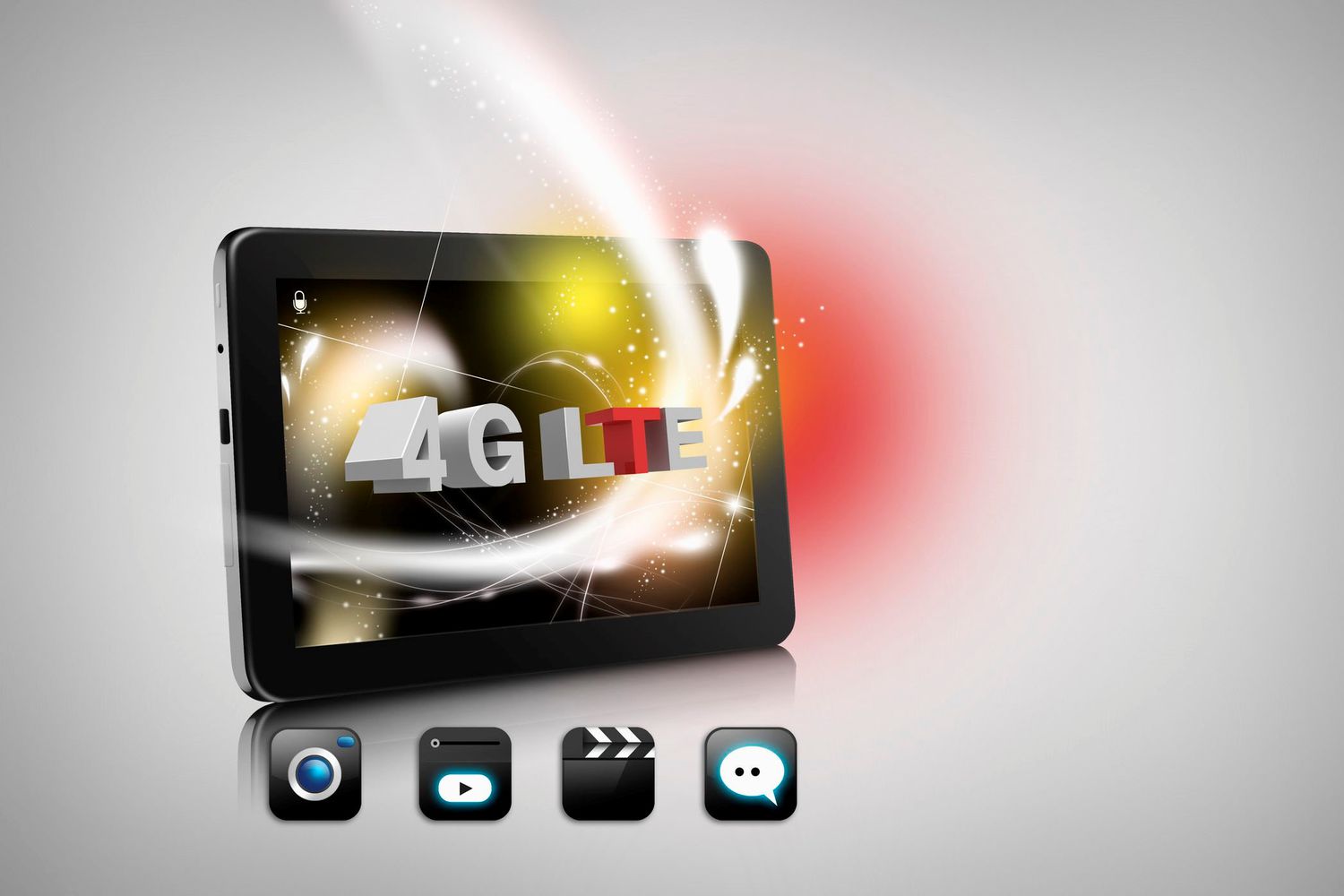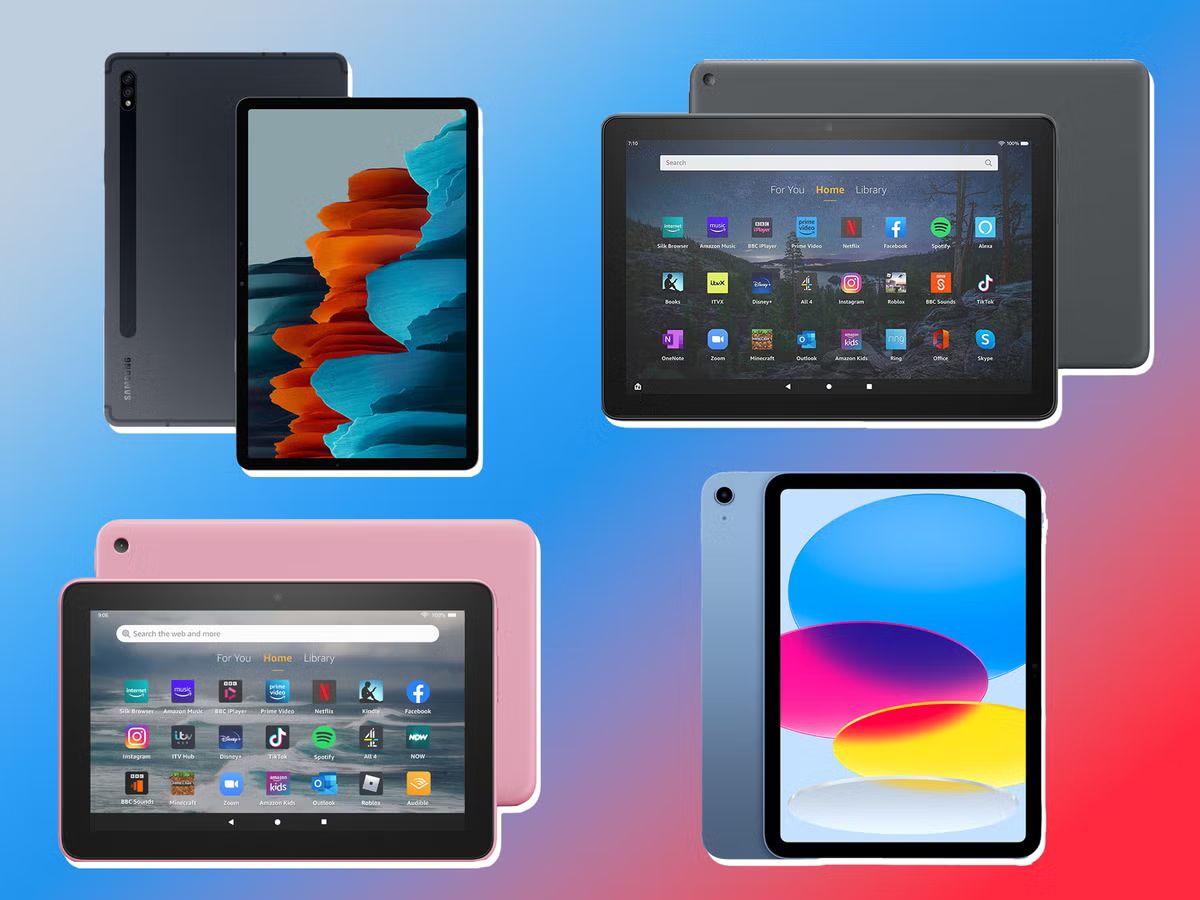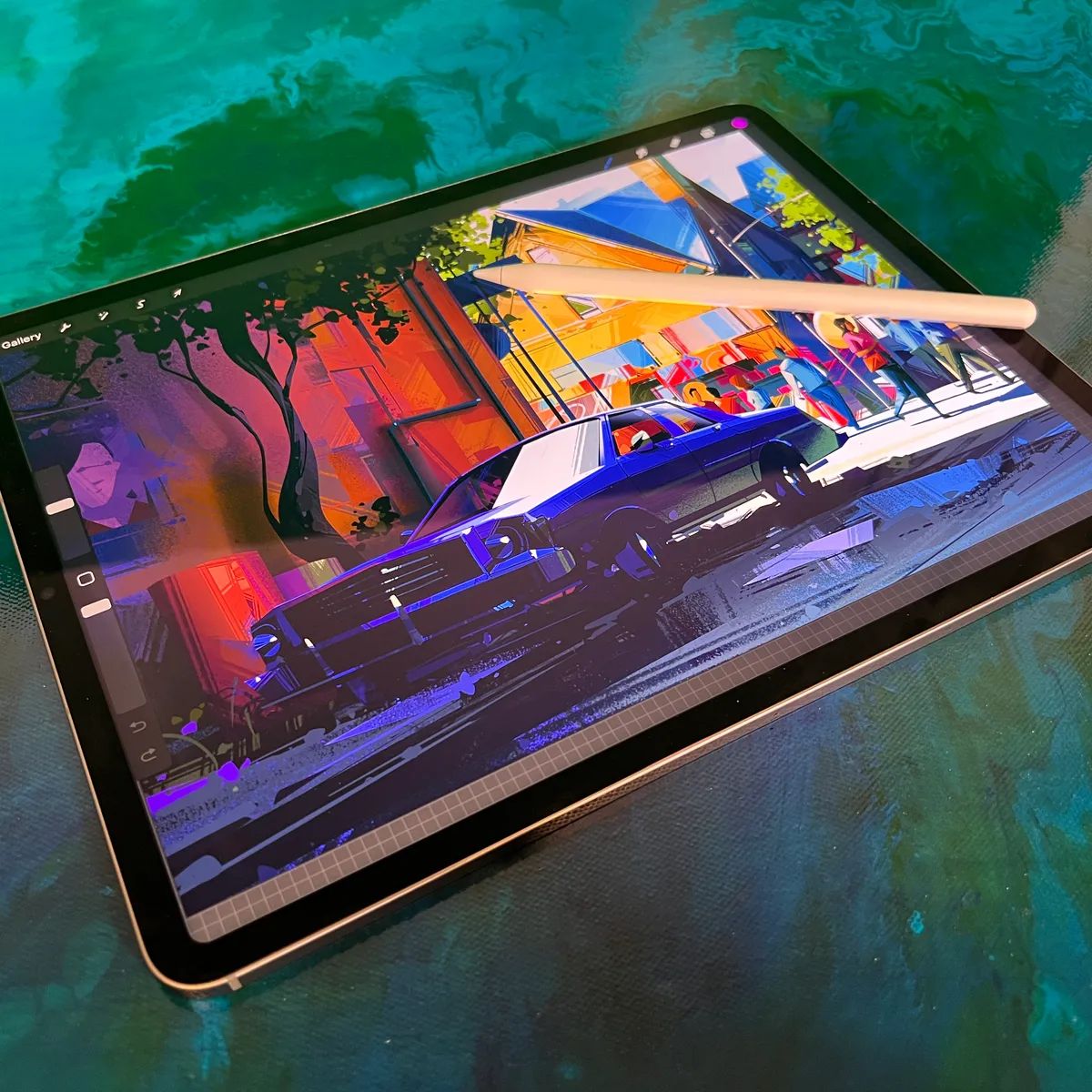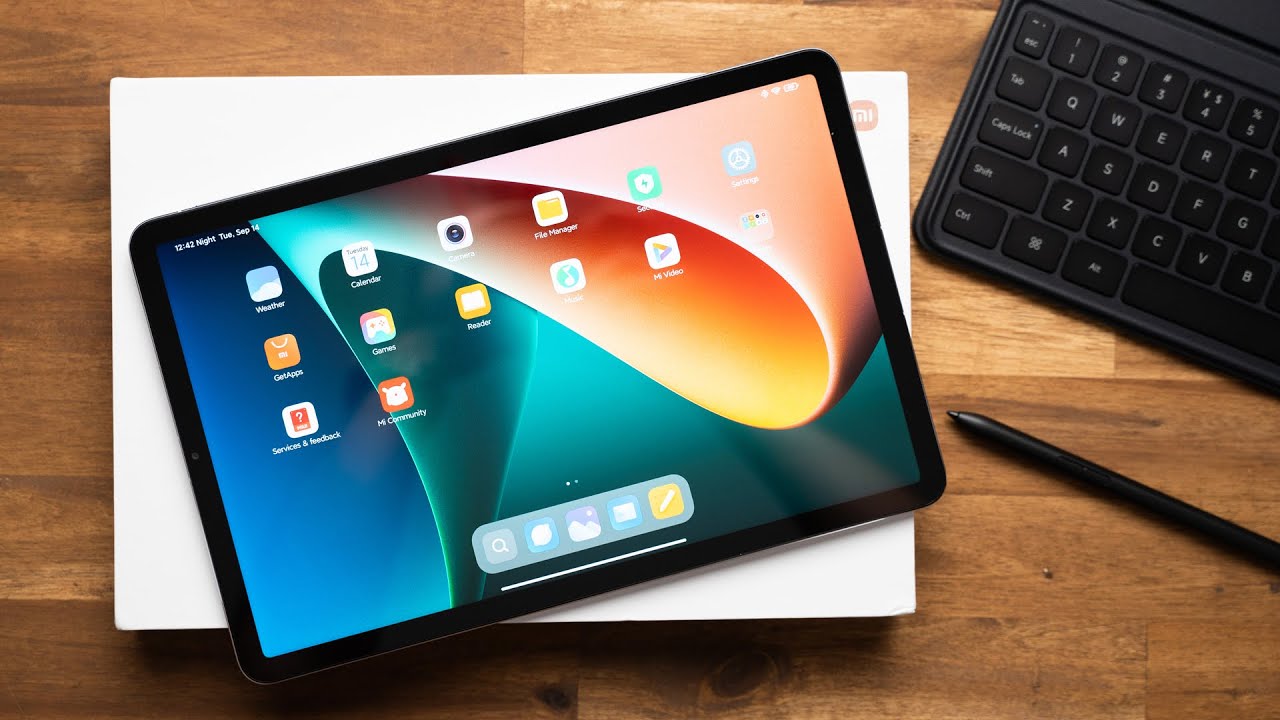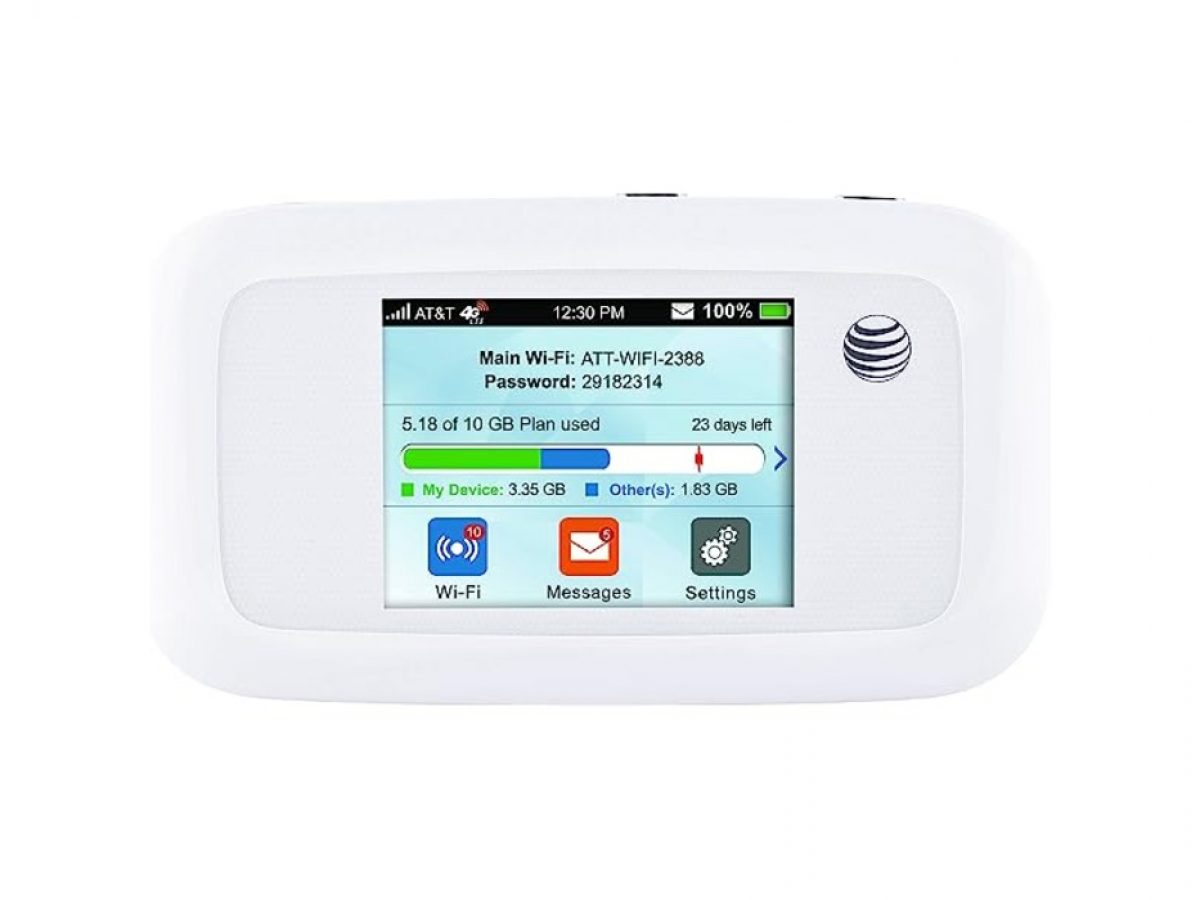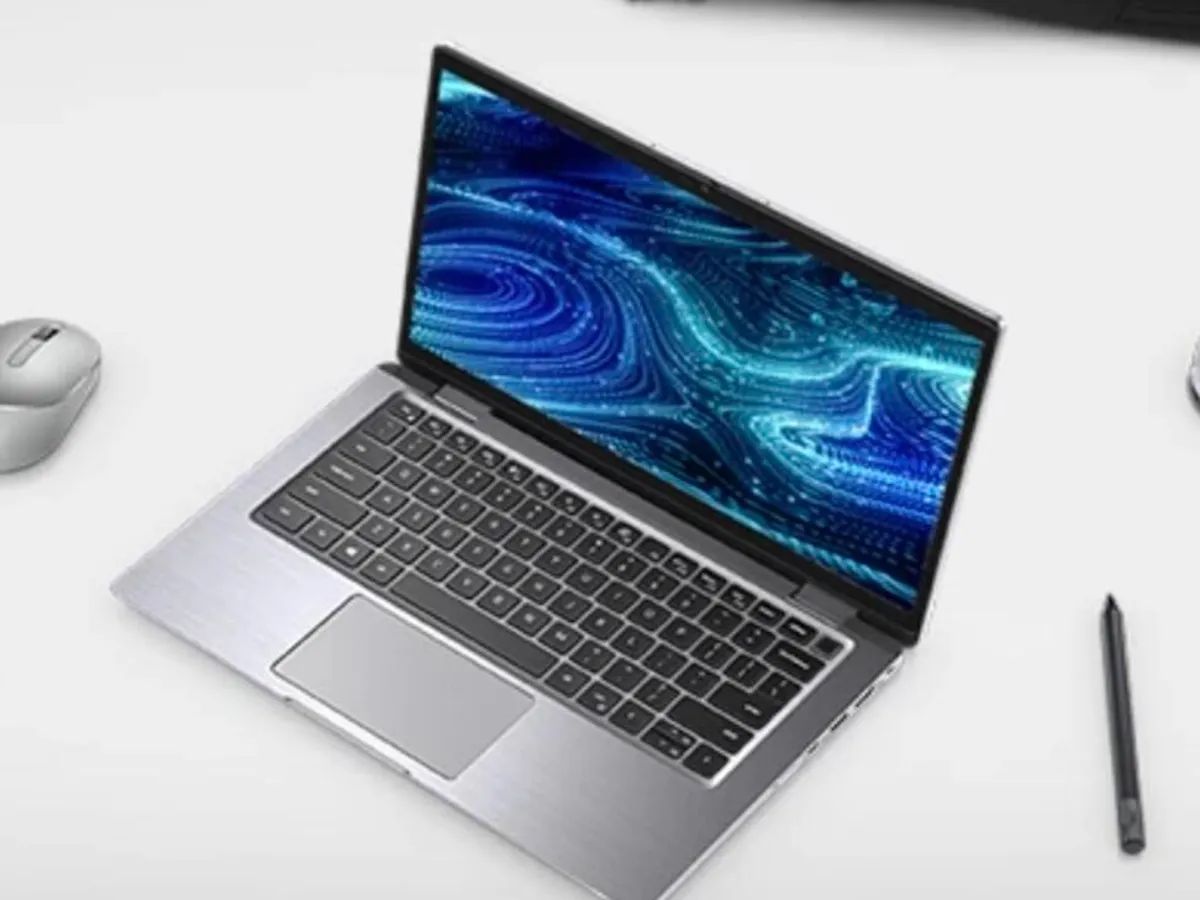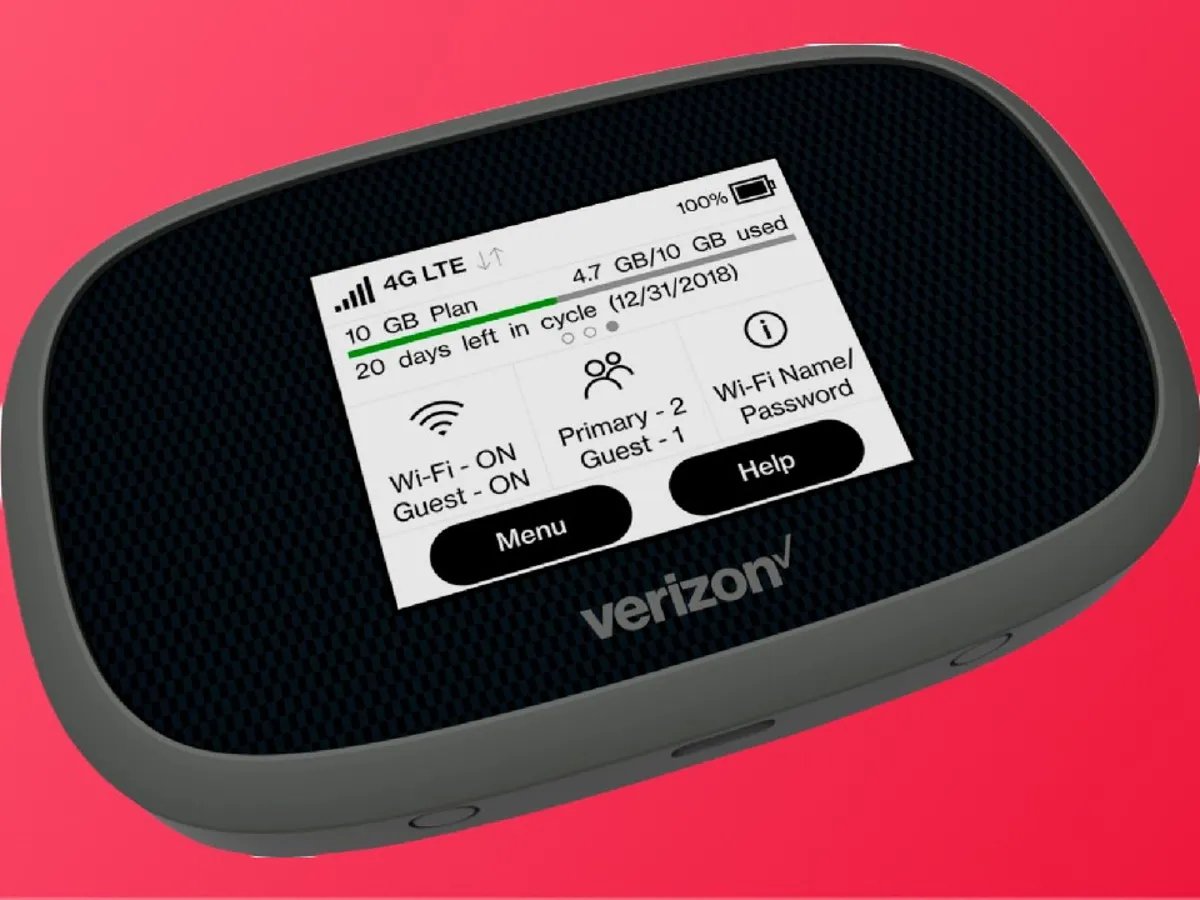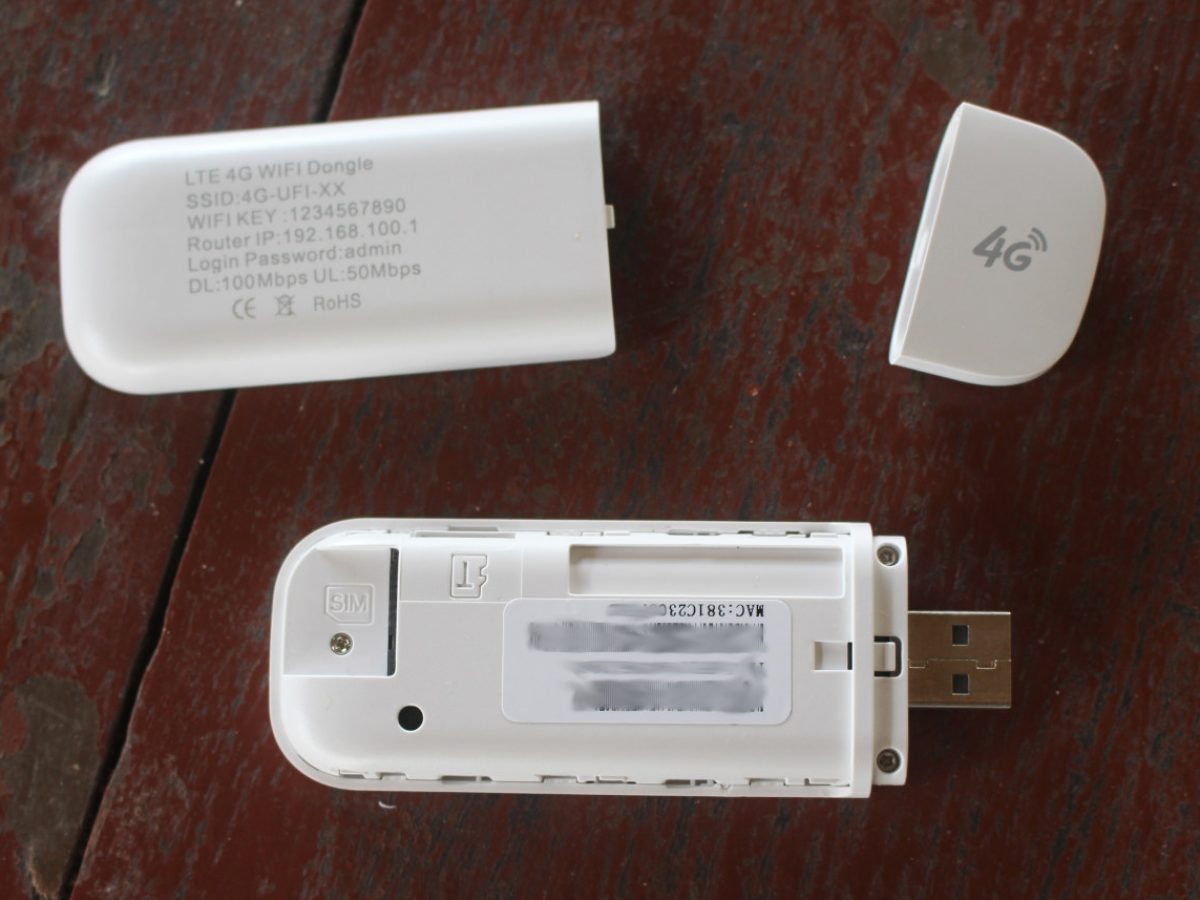Introduction
Tablets have become an integral part of our daily lives, providing us with a portable and convenient way to stay connected, work, and entertain ourselves on the go. One of the key features that users look for when purchasing a tablet is its connectivity options, including whether it supports 4G.
But what exactly does 4G mean? How does it work on tablets? And what are the benefits and limitations of using 4G on tablets? In this article, we will explore these questions and provide you with essential information to help you make an informed decision when choosing a tablet with 4G capabilities.
4G, which stands for fourth generation, is the latest generation of wireless technology. It offers faster data speeds, enhanced network capacity, and improved reliability compared to previous generations like 3G. With 4G, you can experience seamless browsing, smooth video streaming, and faster downloads on your tablet.
To use 4G on a tablet, you need a tablet that is compatible with 4G networks. These tablets come with built-in cellular capabilities, allowing you to connect to the internet using a SIM card and a data plan provided by a network carrier. This means you don’t have to rely on Wi-Fi hotspots to access the internet; you can enjoy high-speed connectivity wherever you are, as long as there is coverage from your network carrier.
There are several benefits of using 4G on tablets. Firstly, it offers faster internet speeds, enabling you to quickly load web pages, stream videos, and download content. This is particularly beneficial for tasks that require bandwidth, such as video conferencing and cloud-based productivity tools. Secondly, 4G connectivity provides a reliable connection, reducing the risk of interruptions or buffering during online activities. Lastly, 4G enables you to stay connected even in areas where Wi-Fi is not available, expanding your online presence and productivity.
However, it’s essential to consider the limitations of using 4G on tablets. One of the primary concerns is the potential for higher data usage and associated costs. Streaming videos and downloading large files can quickly consume your data allowance, and exceeding your limit may result in additional charges or reduced speeds. Additionally, 4G coverage may not be available in all areas, especially in remote or rural locations. It’s important to check the coverage maps of different network carriers to ensure that you have access to reliable 4G connectivity where you need it.
In the next sections, we will delve deeper into how to check if your tablet is 4G compatible, tips for choosing a tablet with 4G capabilities, and comparing 4G data plans for tablets. Additionally, we will provide useful tips for maximizing your 4G experience on tablets. So, let’s explore the world of 4G on tablets and discover how it can revolutionize the way you use your device on the go.
What is 4G?
4G, short for fourth generation, refers to the latest generation of wireless network technology that provides faster and more reliable internet connectivity on mobile devices, including tablets. It is an upgrade from previous generations like 3G, offering significant improvements in speed, capacity, and overall performance.
One of the key features of 4G is its ability to deliver faster data speeds, allowing users to browse the internet, stream videos, download files, and engage in other online activities with minimal lag or buffering. With 4G, you can enjoy a seamless and high-quality internet experience, even when you are on the move.
So, how fast is 4G? While the actual speed may vary depending on various factors such as network congestion and signal strength, 4G networks are designed to provide download speeds of up to several tens of megabits per second (Mbps) and upload speeds of several megabits per second. This means you can quickly load web pages, stream high-definition videos without interruptions, and download large files in a matter of seconds.
In addition to faster data speeds, 4G networks offer enhanced capacity and efficiency. This means that more devices can connect to the network simultaneously without experiencing a significant drop in performance. With the increasing number of internet-connected devices, such as smartphones, tablets, and Internet of Things (IoT) devices, 4G networks can handle the growing demand for data and provide a seamless online experience to users.
4G technology also incorporates advanced techniques to improve the overall network performance and reliability. For example, it utilizes multiple-input and multiple-output (MIMO) technology, which involves using multiple antennas to transmit and receive signals simultaneously, resulting in improved data throughput and coverage. Additionally, 4G networks employ techniques like Orthogonal Frequency Division Multiplexing (OFDM) to efficiently utilize the available spectrum and minimize interference.
Moreover, 4G networks offer low latency, which is the time it takes for data to travel between the device and the network. The reduced latency in 4G enables faster response times, making it ideal for real-time applications like online gaming, video conferencing, and remote control of devices.
In summary, 4G is the latest generation of wireless network technology that provides faster data speeds, improved capacity, and reliability compared to previous generations. It enables users to enjoy a seamless and high-quality internet experience on their tablets, allowing them to stay connected, productive, and entertained wherever they go.
How does 4G work on tablets?
4G technology works on tablets by utilizing the cellular network infrastructure to provide high-speed internet connectivity. When you use a tablet with 4G capabilities, it connects to the nearest 4G network tower via a built-in cellular modem and antenna.
When you access the internet or perform any online activity on your tablet, the data is transmitted through the cellular network as radio waves. These radio waves travel from your tablet to the nearest 4G tower, which acts as a gateway to the internet. From the tower, the data is then transported through the network infrastructure to its destination, such as a website server.
At the 4G tower, the radio waves carrying your data are converted into digital information and transmitted over the internet using fiber optic cables or other high-speed transmission methods. Once the data reaches its destination server, the requested information is sent back through the same process in reverse, eventually reaching your tablet.
One of the key components of 4G technology is the use of different frequency bands to transmit and receive data. These frequency bands are divided into different channels, which enable multiple users to access the network simultaneously without interfering with one another. This division of channels allows for efficient data transmission and reduces congestion on the network.
In addition to the frequency bands, 4G networks also make use of advanced technologies such as orthogonal frequency-division multiplexing (OFDM) and multiple-input and multiple-output (MIMO). These techniques enable the network to transmit and receive multiple data streams simultaneously, increasing the overall data capacity and improving the overall performance of the network. This results in faster data speeds, reduced latency, and improved reliability.
To use 4G on a tablet, you will need a valid SIM card from a network carrier that provides 4G coverage in your area. You will also need to subscribe to a data plan that suits your usage requirements. Once you have inserted the SIM card into your tablet, it will establish a connection to the network and allow you to access the internet using 4G.
In summary, 4G on tablets works by utilizing the cellular network infrastructure to transmit and receive data. It enables high-speed internet connectivity on tablets by leveraging advanced technologies and frequency bands to provide fast and reliable data transmission. By connecting to the nearest 4G tower, tablets can access the internet and perform various online activities with ease and convenience.
Benefits of using 4G on tablets
Using 4G on tablets offers several advantages that enhance your overall internet experience and productivity. Let’s explore some of the key benefits of utilizing 4G connectivity on your tablet:
- Faster internet speeds: One of the primary benefits of using 4G on a tablet is the significantly faster internet speeds it provides. Whether you are browsing the web, streaming videos, or downloading files, 4G allows for quick load times and seamless online activities. You can enjoy smoother video playback, faster app downloads, and a snappy browsing experience.
- Enhanced productivity: With 4G, you can remain productive on your tablet even when you are away from a Wi-Fi connection. This is especially valuable for professionals who need to access important documents, participate in video conferences, or collaborate with team members on the go. 4G connectivity ensures that you can stay connected and complete tasks efficiently, no matter where you are.
- Reliable connection: 4G networks are designed to offer a reliable internet connection, minimizing interruptions and network congestion. This becomes particularly beneficial in areas with weak Wi-Fi signals or in crowded public spaces where Wi-Fi networks may be overloaded. With 4G, you can rely on a stable and consistent connection, ensuring uninterrupted access to your online activities.
- Wider coverage: Unlike Wi-Fi, which is limited to specific locations, 4G offers wider coverage. As long as there is coverage from your network carrier, you can access the internet on your tablet wherever you go. This makes 4G ideal for travelers, as you can stay connected while on the road, in remote areas, or in places where Wi-Fi may be unavailable.
- Convenience and flexibility: 4G connectivity on tablets provides the flexibility to use your device without being tethered to a Wi-Fi network. You are not limited to certain locations or dependent on available Wi-Fi hotspots. This freedom allows you to use your tablet in cafes, parks, airports, and other places with ease, without having to worry about connecting to Wi-Fi or struggling with a slow connection.
- Multi-device connectivity: With 4G, you can connect multiple devices to the internet using a mobile hotspot feature on your tablet. This is especially useful if you are using a Wi-Fi-only device or if you need to connect other Wi-Fi-enabled devices, such as laptops or gaming consoles, to the internet. You can share your 4G connection with other devices, providing internet access to all your devices simultaneously.
In summary, using 4G on tablets offers faster internet speeds, enhanced productivity, a reliable connection, wider coverage, convenience, flexibility, and the ability to connect multiple devices. These benefits greatly enhance your tablet experience, allowing you to stay connected, productive, and entertained wherever you go.
Limitations of using 4G on tablets
While 4G connectivity on tablets provides numerous advantages, there are also some limitations to consider. Understanding these limitations can help you make informed decisions about your internet usage and manage your expectations. Let’s explore some of the key limitations of using 4G on tablets:
- Data usage and costs: Utilizing 4G on tablets can lead to higher data usage compared to using Wi-Fi. Activities such as streaming videos, downloading large files, or online gaming can quickly consume your data allowance. Exceeding your data cap may result in additional charges or reduced speeds. It’s important to keep track of your data usage and choose a data plan that aligns with your needs.
- Network coverage limitations: While 4G networks offer widespread coverage, there are still some areas with limited or no 4G coverage. This is especially true in rural or remote locations. If you frequently travel to such areas, it’s crucial to check the coverage maps of different network carriers and ensure that you have access to reliable 4G connectivity where you need it.
- Battery drain: Utilizing 4G on your tablet requires continuous wireless data transmission, which can significantly impact battery life. 4G connectivity consumes more power compared to Wi-Fi, which can result in faster battery drain. To mitigate this limitation, consider optimizing your tablet’s settings, turning off unnecessary background services, and making use of power-saving features.
- Signal interference and congestion: In densely populated areas or crowded venues, such as stadiums or conference centers, 4G networks can experience signal interference and congestion. This can lead to slower network speeds and reduced performance. Being aware of potential congestion areas can help you manage your internet usage or consider alternative connectivity options in such situations.
- Device compatibility: Not all tablets are 4G compatible. Before purchasing a tablet, it’s essential to check its specifications and ensure that it supports 4G connectivity. Some older or budget tablets may only offer Wi-Fi connectivity or support older generation cellular networks like 3G. It’s important to choose a tablet that meets your connectivity requirements.
- Device dependency: Using 4G on a tablet requires having a tablet with built-in cellular capabilities or using a portable hotspot device. This means you need to have the tablet or the hotspot device with you to access the internet. If you forget or lose the tablet or hotspot, you may not have immediate access to 4G connectivity until you retrieve or replace the device.
Understanding the limitations of using 4G on tablets can help you make informed decisions about your internet usage and ensure a seamless and reliable online experience. By considering these limitations, you can effectively manage your data usage, choose the right tablet, and optimize your connectivity options.
How to check if your tablet is 4G compatible
Before purchasing a tablet or considering upgrading your current device to utilize 4G connectivity, it’s important to check if your tablet is 4G compatible. Here are some ways to determine if your tablet supports 4G:
- Check the specifications: The first step is to check the specifications of your tablet. Look for information about the wireless connectivity options, such as cellular capabilities or mobile data support. Tablets that are 4G compatible will typically mention support for 4G, LTE, or specific bands/frequencies required for 4G connectivity.
- Check the manufacturer’s website: Visit the official website of the tablet manufacturer and search for your tablet model. Look for information about the supported network technologies. The website may provide detailed specifications and list the supported cellular networks, including 4G compatibility.
- Consult the user manual: If you still have the user manual that came with your tablet, refer to it to find information about the supported network connectivity options. Look for sections related to wireless connectivity, cellular capabilities, or mobile data functionality. The manual may specify if the tablet is 4G compatible.
- Contact customer support: If you are unable to find the necessary information through the methods mentioned above, reach out to the customer support of the tablet manufacturer. Provide them with the model number of your tablet and inquire about its 4G compatibility. They should be able to provide you with the necessary details.
- Use online resources: There are several websites and forums dedicated to providing information on device compatibility. Visit technology websites or forums where users discuss tablets and their specifications. Look for discussions or articles related to your specific tablet model to find out if it supports 4G connectivity.
By following these steps, you can determine if your tablet is 4G compatible. It’s important to verify this information before making a purchase or considering an upgrade, as it will ensure that you can take full advantage of 4G connectivity and enjoy the benefits it offers on your tablet.
Choosing a tablet with 4G capabilities
If you are in the market for a new tablet and want to take advantage of 4G connectivity, there are several factors to consider when choosing a tablet with 4G capabilities. Here are some important considerations:
- Compatibility: Ensure that the tablet you are considering is compatible with the 4G networks available in your region. Check the supported bands and frequencies to verify compatibility with the network carriers in your area. This information can usually be found in the tablet’s specifications or on the manufacturer’s website.
- Brand and reputation: Opt for a reputable brand when choosing a tablet with 4G capabilities. Well-known brands often provide better support, regular updates, and a wider array of accessories for their tablets. Research customer reviews and ratings for different tablets to get an understanding of their performance and reliability.
- Operating system: Consider your preference for the operating system (OS) when selecting a tablet. Both Android and iOS offer a range of tablets with 4G capabilities. Evaluate the features, user interface, and app ecosystem of each OS to determine which platform aligns with your needs and preferences.
- Screen size and resolution: Choose a tablet with a screen size and resolution that suits your usage requirements. Larger screens are beneficial for multimedia consumption and productivity tasks, but they may sacrifice portability. Consider the aspect ratio, display technology, and resolution to ensure a clear and vibrant viewing experience.
- Processing power and memory: Assess the processing power and memory of the tablet to ensure it can handle your desired tasks and applications. Look for tablets with adequate RAM and a fast processor to ensure smooth multitasking, efficient app performance, and responsive user experience.
- Battery life: Consider the battery life of the tablet, especially if you intend to use 4G connectivity extensively. Look for tablets with larger battery capacities and power-saving features to ensure that you can stay connected for extended periods without having to recharge frequently.
- Additional features: Evaluate the additional features and functionalities offered by the tablet. This may include features such as expandable storage, stylus support, biometric authentication, dual speakers, or water resistance. Choose the features that align with your specific needs and enhance your overall tablet experience.
- Price: Set a budget for your tablet purchase and consider the price range of tablets with 4G capabilities. Compare the prices of different models and evaluate the value they offer in terms of specifications, performance, and brand reputation. Be mindful of striking a balance between affordability and the features you require.
By considering these factors, you can choose a tablet with 4G capabilities that meets your needs and provides a seamless internet experience. Take your time to research and compare different options to find the tablet that offers the right combination of features, performance, and value for your personal or professional requirements.
Comparing 4G data plans for tablets
When using 4G on your tablet, it’s essential to choose a suitable data plan that best suits your usage needs and budget. Here are some factors to consider when comparing 4G data plans for tablets:
- Data allowance: Examine the data allowance offered by different data plans. Consider your typical internet usage, such as browsing, streaming, downloading, and video conferencing. Choose a plan that provides sufficient data for your activities without exceeding your budget.
- Speed and throttling: Check the speed of the 4G data plan and any possible throttling restrictions. Some data plans may offer unlimited data but throttle the speeds after reaching a certain threshold. Evaluate if the plan meets your speed requirements without sacrificing network performance.
- Network coverage: Assess the coverage of the network carrier offering the data plan. Ensure that the carrier provides reliable 4G coverage in your area and areas you frequently visit. Check coverage maps and consult user reviews to gain insights into the carrier’s network performance and reliability.
- Contract or prepaid: Decide whether you prefer a contract plan or a prepaid plan. Contract plans usually require a long-term commitment but may offer more benefits or discounts. Prepaid plans provide flexibility with no long-term commitment, allowing you to adjust your plan or carrier as needed.
- Extra features and perks: Consider any extra features or perks provided with the data plan. This may include features like unlimited streaming for certain services or access to additional services like mobile hotspot capability. Evaluate if these features align with your usage requirements and enhance your overall experience.
- Cost: Compare the cost of different data plans, taking into account the monthly fee, any activation or setup fees, and any additional charges. Look for promotional offers or discounts that may be available. Ensure that the cost of the plan fits within your budget and provides value for the features and data allowance offered.
- Customer support: Research the customer support and service reputation of the network carrier offering the data plans. Adequate and responsive customer support can be valuable when encountering technical issues or needing assistance with your plan. Read user reviews and seek recommendations to assess the carrier’s service quality.
By comparing these factors, you can select a 4G data plan that meets your internet usage needs and provides a reliable and cost-effective solution for staying connected on your tablet. It’s important to regularly review your data plan to ensure it continues to meet your requirements, as your usage patterns may change over time.
Tips for maximizing your 4G experience on tablets
To make the most out of your 4G connectivity on tablets and ensure a seamless and efficient internet experience, here are some tips to consider:
- Monitor your data usage: Keep track of your data usage to avoid exceeding your plan’s data allowance or incurring additional charges. Utilize built-in data monitoring tools or download third-party apps that can help you track your data usage in real-time.
- Connect to Wi-Fi when available: Whenever possible, connect to a Wi-Fi network to conserve your 4G data. Take advantage of Wi-Fi hotspots in public places, cafes, and your home to offload data usage from your cellular connection.
- Optimize app settings: Adjust the settings of your apps to minimize data consumption. Many apps have settings that allow you to limit background data usage, set quality settings for streaming, and enable data-saving modes. Review these settings and customize them to suit your needs.
- Disable auto-updates: Turn off automatic app updates in your tablet’s settings. App updates can consume a significant amount of data, especially for larger apps. Instead, manually update your apps over Wi-Fi to control when and how much data is used.
- Cache offline content: Take advantage of apps and services that allow you to download content for offline access. For example, you can download music, videos, or documents beforehand when you have a Wi-Fi connection, allowing you to enjoy them without using your 4G data.
- Enable data compression: Some web browsers and apps offer data compression features that can reduce the amount of data used while browsing the internet. Enable these features to optimize your data usage and still enjoy a fast browsing experience.
- Close unused background apps: Applications running in the background may consume data without your knowledge. Close or disable apps that you are not actively using to minimize data usage and conserve battery life.
- Regularly update your tablet’s software: Keeping your tablet’s software up to date ensures that you have the latest system optimizations, bug fixes, and security updates. These updates can improve network performance, enhance data efficiency, and address any potential vulnerabilities.
- Secure your connection: When connecting to public Wi-Fi networks, consider using a virtual private network (VPN) to encrypt your internet traffic and ensure your data remains secure. This helps protect your sensitive information from potential threats on unsecured networks.
- Limit media streaming quality: Reduce the streaming quality of videos and music to minimize data usage. Many streaming services allow you to customize the quality settings to control the amount of data consumed. Opt for lower resolutions or choose a lower streaming quality option when using cellular data.
By implementing these tips, you can maximize your 4G experience on tablets, optimize your data usage, and ensure a fast and efficient internet connection. These practices will not only help you make the most of your 4G data plan but also improve your overall tablet usage and productivity on the go.
Conclusion
4G connectivity on tablets has revolutionized the way we stay connected, work, and enjoy media on the go. With its faster data speeds, enhanced capacity, and reliable network coverage, 4G provides a seamless and efficient internet experience. By choosing a tablet with 4G capabilities and selecting the right data plan, you can unlock the full potential of 4G connectivity.
Throughout this article, we have explored the meaning and working of 4G on tablets. We have discussed the benefits of using 4G, including faster internet speeds, enhanced productivity, and wider coverage. However, it’s important to be aware of the limitations, such as potential data usage concerns or limited coverage in certain areas.
To make the most out of your 4G experience on tablets, we provided useful tips on monitoring your data usage, optimizing app settings, and utilizing Wi-Fi networks when available. By following these tips, you can maximize your data plan, conserve battery life, and ensure a seamless internet experience on your tablet.
When selecting a tablet with 4G capabilities, consider factors like compatibility, brand reputation, operating system, screen size and resolution, processing power, and additional features. Comparing different 4G data plans includes assessing data allowances, network coverage, speed, pricing, and customer support.
In conclusion, 4G connectivity on tablets offers fast, reliable, and convenient internet access wherever you are. By choosing a tablet that supports 4G and selecting the right data plan, you can stay connected, be productive, and enjoy multimedia content with ease. Keep in mind the limitations and tips mentioned in this article, and you are well-positioned to make the most out of your 4G-enabled tablet.







